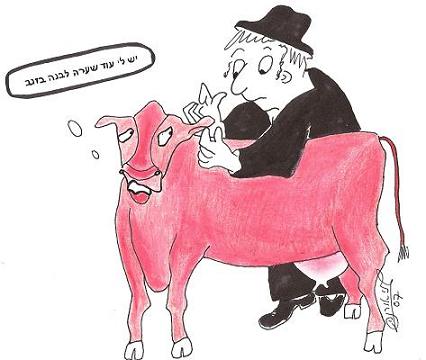
If a person becomes ritually impure through contact with the dead, he can only enter the Holy Temple or eat terumah in purity after he has undergone the ceremony of having the ashes of the read heifer sprinkled on him, as is detailed in the Torah’s laws: “They should bring you a red heifer without blemish…it shall be slaughtered before him…Then the heifer shall be burned in his sight: its hide, its flesh, its blood, and its offal shall be burned…Then a man who is clean shall gather up the ashes of the heifer’ (Numbers 19:2-9). The Torah requires that we take a red heifer without blemish and the sages interpreted this to mean that it must be fully red. If it sprouted hairs in another color — black, white, or gray — it is invalid for use in the purification ceremony. How many hairs must sprout to invalid the heifer? The sages disagreed. According to one sage if she sprouted two black or two white hairs in a single location, “from a single follicle,” the heifer is no longer a red heifer without blemish. According to another sage, even if the two white hairs are within a circle of the skin in which many hairs grow it is no longer a red heifer without blemish. But if one white hair is in one circle and the other is in another circle, the heifer is still considered a red heifer without blemish unless the two hairs are very close to each other. According to Rabbi Akiva one may pluck out even five white hairs, as long as they are far from each other. According to R’ Eliezer, even if the heifer sprouted 50 scattered white hairs one may pluck them out. According to another sage, the heifer is invalid if it sprouts even two scattered white hairs; for example, a heifer which sprouts one white hair in its tail and one on its head is not considered a red heifer without blemish. What is the rule for a hair whose root is red but the top is black, or vice versa? According to one sage it depends on which color is more visible. If the red dominates, the heifer is valid, and if the white dominates, it is invalid. According to most sages the root color determines. If the top of the hair is white but the root is red, the heifer is valid; if it is the opposite the heifer is invalid.
(Mishnah, Tractate Parah 2:5)
